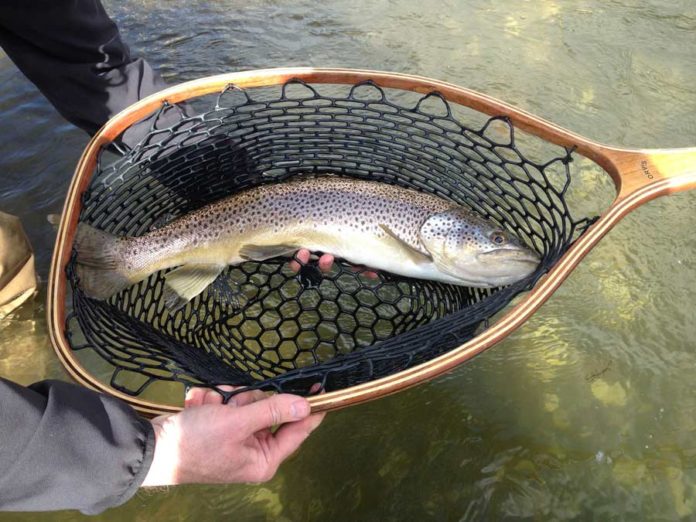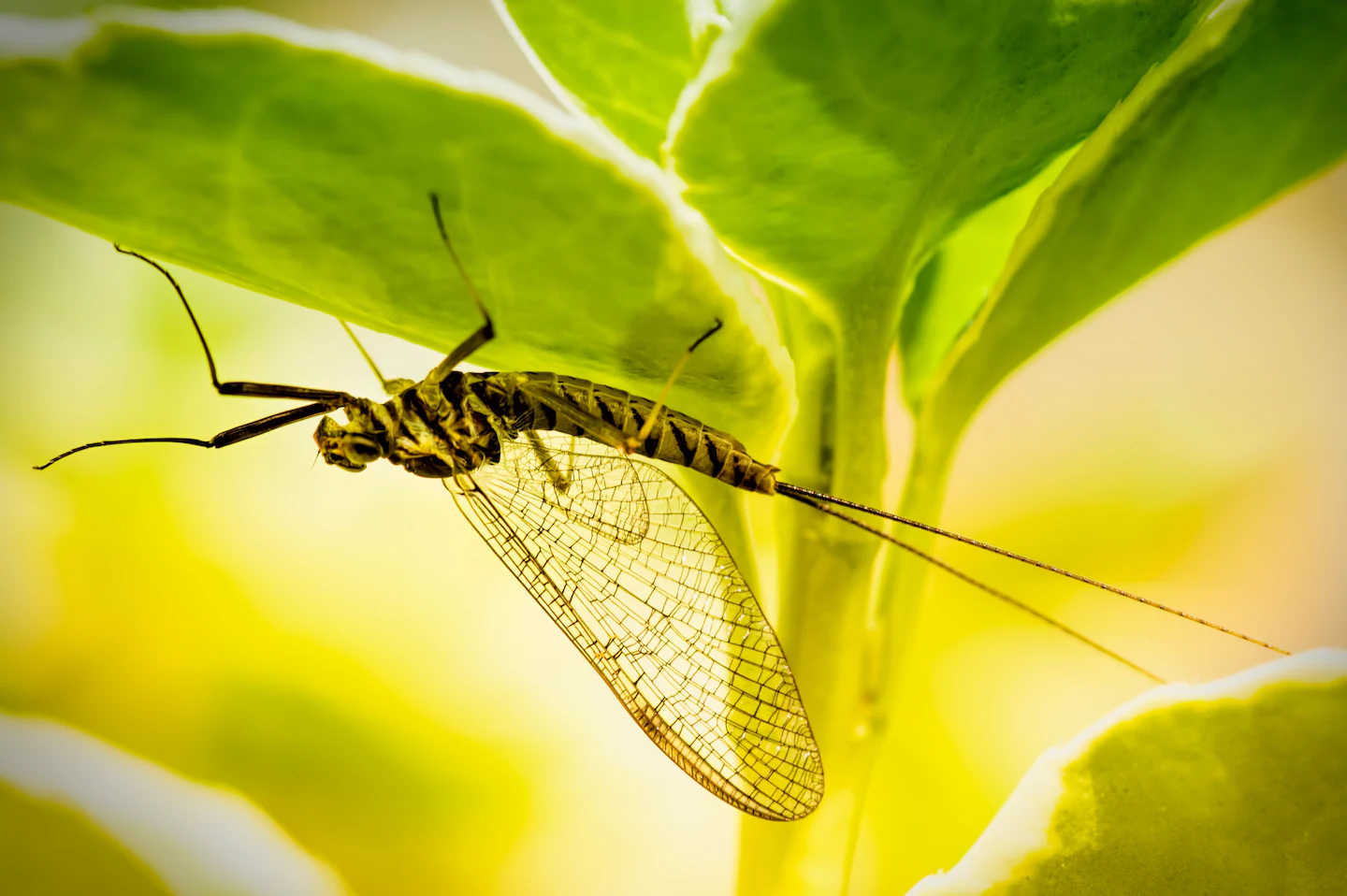by Art Scheck
Photo by Phil Monahan
What’s the best knot for attaching a hook to nylon or fluorocarbon? The answer has to begin with, “It depends on . . . .” Line-to-hook knots have so many variables that the notion of a single, universally best connection makes no sense, and an angler who fishes for everything from spring-creek trout to billfish needs to know more knots than a specialist does. But for most freshwater sport, and certainly for angling with light tippets, a fly fisher can get along fine with two tippet-to-hook knots.
Many line-to-hook knots perform very well in light materials, and it’s unlikely that any single knot is always the strongest in every size of every brand of line. But I busted nearly a mile of tippet material one winter to compare various knots, and two emerged as very strong and reliable in all the 3X and lighter materials that I tried. These two knots even provide different types of connections: a free-swinging loop and a tight-to-the eye knot.
The Nonslip Mono Loop
An open loop knot allows a fly more freedom of movement. Streamers, poppers, sliders, nymphs, and even some dry flies have more action when attached with loops than with tight-to-the-eye knots. Many good anglers use loops for most of their fishing.
Popularized by Lefty Kreh and Mark Sosin in Practical Fishing Knots, the nonslip mono loop wins the strength championship in all the light nylon lines and most of the light fluorocarbons that I’ve tried. In trout-weight nylon tippets, it achieves 100-percent efficiency more often than any other knot except the Bimini twist. It never hits 100 percent in fluorocarbon (I haven’t found a line-to-hook knot that does), but it consistently proved stronger than other knots in most brands. You can’t go wrong with this knot.
In knot-against-knot comparisons, the nonslip mono loop won 100 percent of its contests against the Duncan loop, which is also called the uni-knot. Indeed, the Duncan loop is a particularly poor knot in 3X and lighter tippets; nearly every other knot beats it practically all the time. If you’ve been using Duncan loops in light tippets, stop.
Learning the nonslip mono loop takes a little practice. It’s not difficult, just different. After forming the knot, hook the fly on something solid such as a zipper pull, a D-ring, or one of your forceps’ finger loops. With the help of this impromptu “third hand,” you can keep the standing line taut while pulling on the tag end to close up the wraps. After drawing the wraps almost all the way tight, pull hard on the standing line to seat the knot.
At first, your loops will probably come out longer than you want. After a little practice, you’ll see that you can control the length of the loop in two ways. First, you can reduce the size of the overhand knot before making the wraps. Second, you can draw the hook eye closer to the overhand knot, also before beginning the wraps. With practice, you can make a nonslip mono loop less than a quarter of an inch long.
Learn this knot. (The Orvis Fly Fishing Learning Center features animated instructions.) It gives subsurface flies, poppers, sliders, and big terrestrials more action, and its tremendous strength gives you peace of mind.
The Orvis Knot
My advocacy of this knot will probably prompt letters from a few folks eager to point out that the Triple Reversed Whamboolie or Improved McGurk Special averaged 0.03 percent stronger in their tests. Here’s why I recommend the Orvis knot.
First, in the knot-versus-knot shock tests that I conducted with various 3X and lighter materials—and I did thousands of them—the Orvis knot finished first or second among all the connections that I tried, consistently beating the 16-20, Trilene, and Palomar knots. At least a quarter of the time, a light nylon tippet will bust before this knot fails. That’s extraordinarily good performance.
Second, it always works in any material. That’s not true of all knots; I have trouble seating a 16-20 knot or Eugene bend in some fluorocarbons.
Third, it’s almost too simple to be true. A monkey can learn to make this knot; I can tie one faster than I can make an improved clinch. The knot’s simplicity translates into consistency.
Fourth, it’s a very small and therefore very light knot. It creates a smaller lump of plastic at the nose of a fly than a clinch or Trilene knot makes. Only the Palomar knot matches it for tidiness.
Perhaps another knot tests a mite better in one or two sizes of one brand of tippet material. The difference isn’t worth worrying about; in 3X and lighter nylon, the Orvis knot will come out 99-point-something percent efficient. Its simplicity, reliability, and versatility make it more valuable than other knots. The Orvis knot came from a gent named Larry Becker, who submitted it to a contest that Orvis ran some years ago.
One caveat. The knot seems less efficient in some heavy lines. In tests with some fairly stiff 0.011- and 0.012-inch monofilament, the Trilene knot beat the Orvis knot more than half the time. I can’t explain why, nor do I know whether the same thing would happen with all heavier materials. In trout and smallmouth tippets, the Orvis knot is utterly reliable. The Orvis Fly Fishing Learning Center, again, offers animated instructions.
And what of those old favorites, the clinch and improved clinch? In two words, they stink, at least in light tippets. Except for the equally poor Duncan loop, every other knot that I’ve tried beats the clinch or improved clinch virtually all the time. When I pitted one against the other, the improved clinch usually lost to the plain version. In some 5X and 6X materials, the clinch knot can average only 80 percent efficiency.
For light-line fishing, the clinch knot makes sense only if you attach tippets with a second-rate knot. If you insist on using it, tie it with six wraps rather than five; in very light, supple nylon, seven wraps are even better. In heavy tippets, where other knots often lose some efficiency, the clinch works well enough. Besides, an 80-percent knot at the end of a 12- or 14-pound tippet is still too strong for an average guy to break with a fly rod.
Art Scheck is a former editor of American Angler, Fly Tyer, and Saltwater Fly Fishing. He is also the author of Fly Fish Better, A Fishing Life is Hard Work, and Fly Rod Building Made Easy. He lives in South Carolina.
Credit: Source link






























